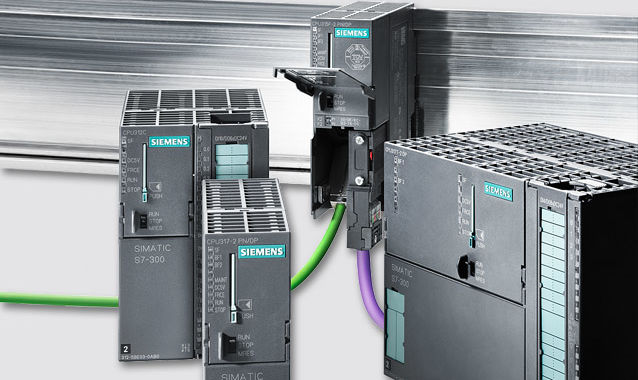Download Simatic Manager Step 7 v5.5 and S7 PLCSIM v5.4 (Trial)Link: windows compatibili. As of STEP 7 V5.4 SP 5, it is possible to run STEP 7 with MS Windows Vista both with activated and deactivated UAC (User Account Control). SIMATIC Manager. There are two formats available for displaying the date and the time. You can select a display in the respective STEP 7 national language and or in ISO 8601 standard format. Siemens SIMATIC STEP 7 v5.6 Free Download Latest Version for Windows. It is full offline installer standalone setup of Siemens SIMATIC. Step7 v5.5 sp2 plcsim v5.4 sp5 2. Siemens simatic step 7 version 5.5 sp4 update. Download step 7 v5.5 full crack. Download keygen for siemens simatic step 7 v5.5 sp4 update. SIMATIC STEP 7 is the world's best known and most widely used engineering software in industrial automation. SIMATIC STEP 7 V5.6 is the proven programming software for the controller families S7-300, S7-400, C7 and WinAC. Information on STEP 7 Versions.

ScreenShots:
Software Description:
Siemens SIMATIC STEP 7 software is theprofessional tool for the SIMATIC S7, SIMATIC C7 and SIMATIC WinACautomation systems. It enables the user to use the performancecapability of these systems easily and conveniently.
SIMATIC STEP 7 contains convenient functions for all phases of anautomation project:
– Configuring and parameterizing the hardware
– Specifying the communication
– Programming
– Test, start-up and service
– Documentation, archiving
– Operating/diagnostics functions
SIMATIC STEP 7 program tools:
1. SIMATIC-Manager:
The SIMATIC Manager manages all data belonging to an automationproject, regardless of the target system (SIMATIC S7, SIMATIC C7 orSIMATIC WinAC) on which they are implemented.
It provides a common entry point for all SIMATIC S7, C7 or WinACtools. The SIMATIC software tools that are necessary for processingthe selected data are automatically started by SIMATIC Manager.
2. Symbol-Editor:
With the tool Symbol Editor all global variables (in contrast tothe local formal parameters that are declared when the blocks areprogrammed) are managed. The following functions are available:
– Definition of symbolic designations and comments for the processsignals (inputs/outputs), flags and blocks
– Sorting functions
– Data exchange with other Windows programs

The symbol charts that are generated when this tool is used areavailable to all software products. Changes to a symbol parameterare therefore automatically recognized by all tools.

3. Hardware configuration:
The tool Hardware Configuration is used for configuring andparameterizing the hardware used for an automation project. Thefollowing functions are available:
– Configuration of the automation system Racks are selectedfrom an electronic catalog and the selected modules are assigned tothe required slots in the racks.
– The configuration of the distributed I/Os is done in the same wayas the configuration of the non-distributed I/Os; channel-granularI/O modules are also supported.
– CPU parameter assignment:
Properties such as restart characteristics and cycle-timemonitoring can be set menu-driven. multicomputing is supported. Theentered data are filed in system data blocks in the CPU.
– Module parameter assignment:
The user can specify all the adjustable parameters of the modulesin input screen forms. Adjustments via DIP switches becomeunnecessary. Parameterization of hardware modules occursautomatically during the CPU’s acceleration. Thus, a change of amodule can be made without another parameterization.
– Function module (FM) and communications processor (CP) parameterassignment:
This parameterization also occurs within the hardware configurationin the same way as the parameterization of the other modules. Forthis parameterization hardware-module-specific screen forms andrules are provided for each FM and CP (is included in the FM/CPfunctions package). The system prevents faulty inputs by offeringonly allowed entry options on the parameter assignment screenforms.
4. Communication configuration:
– Configuring and display of communication links
– Time-driven cyclic data transmission via MPI:
– Selection of communication partners
– Entering of data source and data destinationin a table.Generation of all system data blocks (SDBs) to be loadedand their complete transmission to all CPUs take placeautomatically
– Parameterization of the selected communicationblocks in the customary programming language (e.g., LAD).
– Event-driven data transmission
– Definition of the communication links.
– Selection of the communication function blocks (CFBs) from theintegrated block library.
– Parameterization of the selected communication blocks in thecustomary programming
language (e.g., LAD).
5. System diagnostics:
System diagnostics offer the user an overview of the status of theautomation system. The display can be in two different forms:
– Display of text messages, which can be output directly andquickly.
– Pixel-graphics display within the Hardware Config display,offering the following options:
– Display of general module information (e.g., order number,version, designation) and module status (e.g., faulty)
– Display of module faults (e.g., channel faults) of thecentral I/O and DP slaves
– Display of alarms from the diagnostics buffer
Step 7 V5.6 Sp2
For CPUs, additional information is displayed:
– Causes of malfunction during user program execution.
– Display of cycle duration (longest, shortest and last cycle).
– Display of the reserved and free memory.
– Capabilities and usage of MPI communication.
– Display of the performance data (number of possibleinputs/outputs, flags, counters, timers and blocks)
Installer Size: 2889 MB